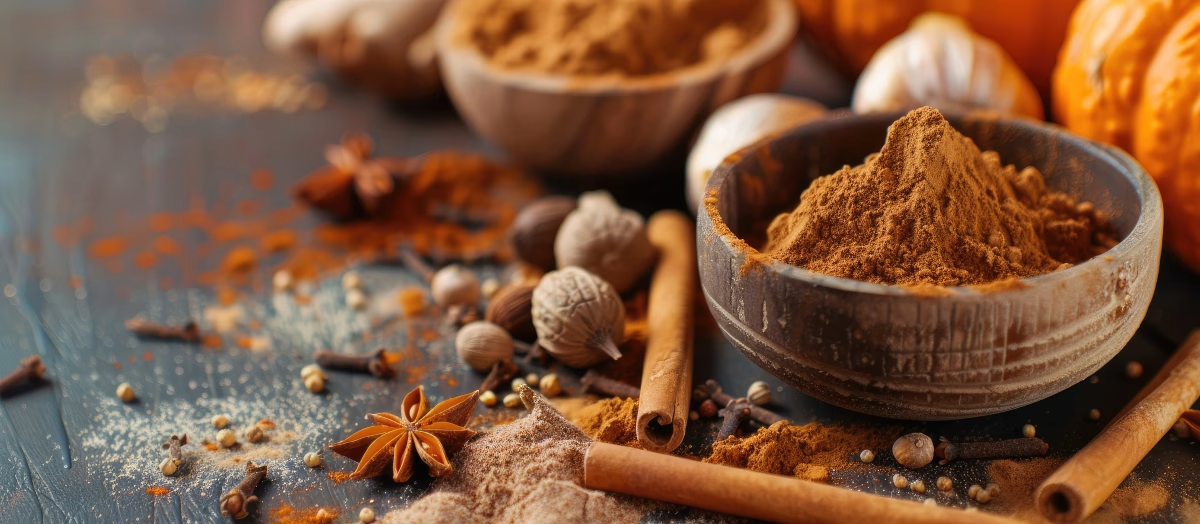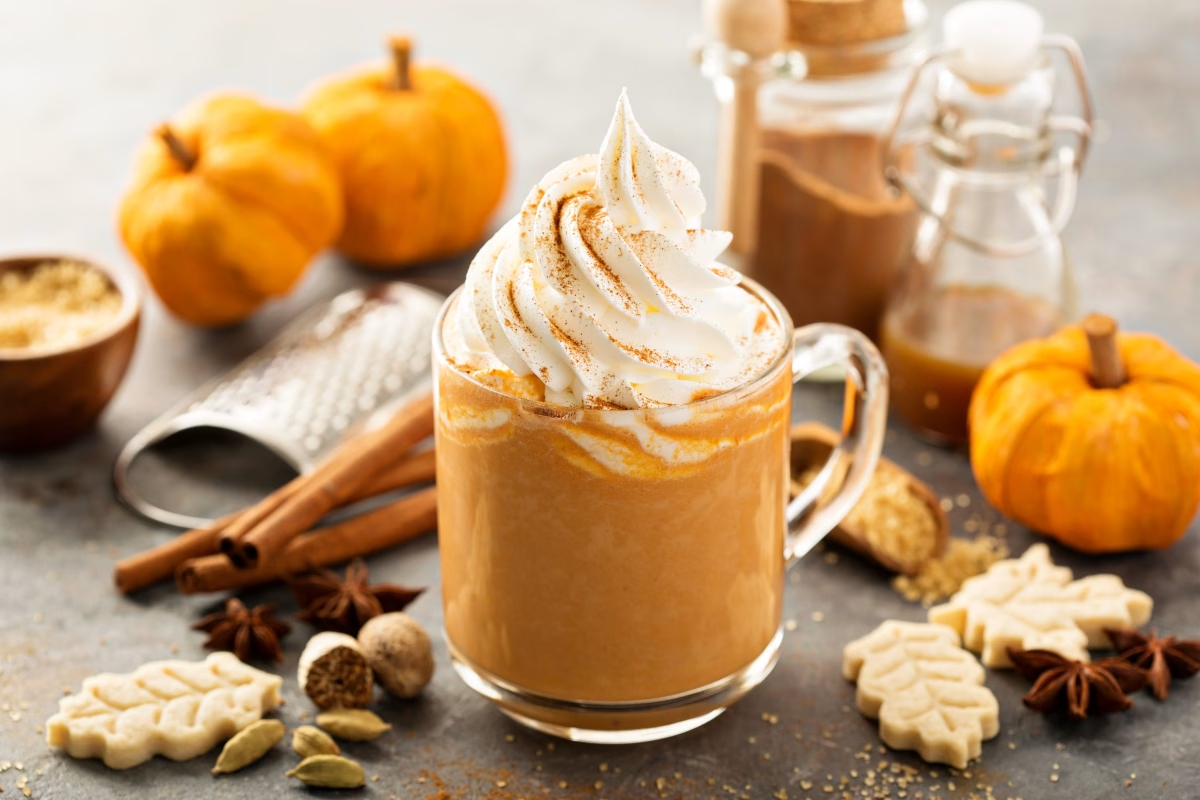Discover the history and science behind Starbucks’ Pumpkin Spice Latte (PSL)-an iconic fall favorite. This blog explores the PSL’s evolution, consumer research, and the power of biosensors like eye tracking and GSR in taste-testing, helping brands understand nonconscious consumer reactions and optimize beverage product launches.
Table of Contents
Every Autumn (or Spring, depending on where you are), people await the release of the Great Pumpkin Spice Latte (PSL). Over the last 21 years, Starbucks’ PSL has become a harbinger of autumn. Much like halloween and christmas decorations, PSL season arrives earlier every year. (No, it isn’t climate change. And no, you’re not misremembering, the PSL release date has changed considerably over the years.)
Starbucks did not invent pumpkin spice or even pumpkin spice lattes. “Pompkin” spice has arguably been around since at least 1796. Pumpkin (pie) spice pre-mixed seasoning was made popular by McCorkmicks in the 1950s. In the 1990s, pumpkin spice coffee drinks and other products started creeping up everywhere (for an entertaining account of the pumpkin spice history, visit here).

But Starbucks did many things right with Pumpkin Spice Lattes. They transformed an unremarkable pilot product into an iconic flavor that influenced countless peculiar foods and popular beverages. This curious-but-cozy coffee combination captured the imaginations of FMCG corporations who added pumpkin spice to everything: beauty products, pet products (warning for puppy lovers), house paint, you name it.
In this blog, we roll out the history of Starbucks’ pumpkin spice latte, give you the scoop on traditional beverage research methods and share hints of how you can use biosensors to enhance your beverage research.
Finding the Novelty-Familiarity Sweet Spot
A Starbucks Story
Inspired by the previous success of seasonal drink offerings such as peppermint mocha and eggnog latte, Starbucks sought to develop a seasonal drink for autumn. According to Starbucks Stories, they brainstormed many flavor ideas and decided on a list of about 20 flavors that included traditional flavors like chocolate and caramel as well as more unique espresso combinations such as pumpkin, orange and cinnamon. Their research started with a written survey for potential customers. The result, pumpkin-themed coffee did not have an impressive score compared to traditional flavors.
Physiological metrics: Engagement and Excitement
Anticipation of new products can result in feelings ranging from excitement to adversity, depending on how far from the respondents’ comfort zone the product is. It is important to introduce new products to keep customers engaged and perhaps bring in new customers, but it is also important to make sure those new products do not deter regular customers. Surveys and focus groups are important research tools for understanding explicit associations and impressions, as well as conscious motivations (such as “intention to buy”).
Biosensors and physiological measures help researchers understand nonconscious impressions. For example, if Starbucks had presented potential flavors on a screen and participants consented to having their facial expressions analyzed, they could have used web cameras to collect data on participants’ facial expressions when presented with various flavor combinations. Do potential customers have a different reaction if you show a picture of the flavor candidate next to a cup of coffee instead of the name of the flavor? Did they show an expression of disgust or surprise in reaction to the unconventional flavors?

Another useful tool researchers might have used is eye tracking. Using a traditional survey they could have not only used the responses from the participants but they could also look at how long participants’ eyes dwelled on the different choices. If you ask someone which flavor they would order, they might say chocolate. But wouldn’t you want to know which other options they may have considered, whether or not they were aware of it?
Familiarity in Taste
The idea of a pumpkin-coffee really hit a novel-familiar sweet spot. According to Starbucks, in the initial survey with potential customers, pumpkin scored high on uniqueness and toward the middle of the group overall. Offering a unique beverage helped Starbucks standout from coffee competitors, making it an appealing although risky choice compared to chocolate and caramel. Comfort is an important consumer expectation in hot drinks and comfort is often closely associated with familiarity.
While the initial idea of pumpkin in coffee was new to Starbucks, the idea of pumpkin with coffee was not new to Americans. Pumpkin spice has been a popular seasonal combination of spices included in pumpkin-centered desserts such as pumpkin pies, pumpkin loaves, pumpkin rolls in the fall for decades. Many Americans consume tea or coffee with dessert. So while the idea of squash-coffee may have been out of the ordinary in pilot testing, the combination of flavors was as familiar as comfort foods at Thanksgiving.
Physiological Metrics: Investigating Arousal
Excitement and comfort alter arousal. Measuring physiological arousal can help beverage developers to find a good balance of something exciting and comforting because your nervous system reacts to things that are exciting and comforting. Arousal is determined by the autonomic nervous system.
Throughout the body, nerves facilitate bidirectional communication between the brain and various organs, determining how those organs respond to the situation. These nerves make up the autonomic nervous system. The autonomic nervous system is divided into sympathetic and parasympathetic nerves, which tend to have opposite effects on the same organs. For example, increased activity in sympathetic nerves increases heart rate while increased activity of parasympathetic nerves decreases heart rate.
Think of the autonomic nervous system as the valve system that supports your shower when you have two knobs/valves (hot and cold water, representing the sympathetic and parasympathetic systems). If you have room temperature water and you need warmer water, you could turn the cold water down, turn the hot water up, or both!
Excitement increases sympathetic activity, but not so much that you feel afraid. Comfort increases parasympathetic activity (and decreases sympathetic activity) but not so much that you fall asleep. Finding a beverage that balances excitement and comfort is like finding the right water temperature, a finely tuned process possible with physiological measurements of arousal.
Arousal can be measured with biosensors. Researchers can use two electrodes on the hand to measure galvanic skin response (changes in skin conductance due small shifts in perspiration that are controlled by sympathetic activity). For more nuanced insights, researchers can use ECG and respiration to measure the activity of the heart and lungs respectively. These tools allow you to collect data on both sympathetic and parasympathetic activity.
Test Environment Matters
Location, Location, Location
Starbucks’s Pumpkin Spice Latte was researched and developed at the “Liquid Lab” on the 7th floor of Starbucks headquarters in Seattle (Now, the Starbucks’ Tryer Center is their research department honing in creativity and innovation). Allegedly, the lab was decorated to give a feeling of autumn and taste testers sampled many different pumpkin pies. When Starbucks decided to create an atmosphere that would remind tasters of the coziness of fall and the pleasure of dessert, it was quite different from the relatively sterile laboratory environments of many taste-testing environments.

Traditional Testing
Research shows that atmosphere (such as lighting and noise level) affect taste testing. In a tasting lab, the environment is controlled by the researcher. Tasting rooms can be almost office-like settings, neutral environments with individual workstations or cubicles. They can also be designed to create a particular atmosphere. Wine tasting outside on a sunny day at a vineyard is a different experience than drinking wine in your own kitchen. Sampling craft beers at a brewery with a small gathering of focused beer-drinkers is different than in a loud stadium of cheering fans. Researchers may even control for time of day, how long ago subjects ate, or how much sample respondents ingest when sampling.
Physiological Baseline
One major advantage of a lab setting is that you can control the variables. You can decide the lighting, the temperature, and the decor of a room. It is tempting to think, if all the participants are in the same environment, then the researcher has controlled for a lot of variables. After all, this is one of the key advantages of having a lab! The problem is that having identical lab environments across participants does not mean that the participants had identical experiences. This way of thinking dismisses how the environment affects mood and arousal, which in turn affect our perception of taste.
With traditional metrics in taste testing research do not focus on how the testing environment affects the perception of the participants. Taking a baseline arousal metrics, gives insights into how individuals feel in the environment. Each participant may have different sensitivities, some may find a quiet lab comfortable and relaxing while others might find it cold and awkward. Others will have different perceptions of lighting. While the hum of a fan might go unnoticed by some, others might find it calming, while others may find it irritating.
If you want to investigate whether a drink is relaxing, it is important to know how relaxed the participant was in the first place! Not having a baseline measure of how the participant is reacting to the environment neglects individual variation. Once they have tasted potential products, you can compare these changes in physiology during each tasting to each individual’s baseline. This allows the researcher to account for individual variation in environment preference.
In the case of the Starbucks set-up, we assume that the environment was a cozy atmosphere. Were tasters dressed appropriately for the cozy environment, maybe some were feeling too warm. How about caffeine tolerance? Could each individual handle similar amounts of caffeine or were some tasters feeling jittery? Our environments contribute to our sense of arousal and our perception. Having baseline metrics allows us to understand how the environment is affecting participants.
Marketing: What’s in a Name?
In 2015, when Starbucks’ Pumpkin Spice Latte already had its own popular hashtag (#PSL) all over social media, many consumers were outraged to learn that the drink did not contain actual pumpkin (and never had). Marketers quickly learned that the difference between a “pumpkin spice” latte and “pumpkin-spice” latte mattered. Starbucks added pumpkin spice sauce (containing pumpkin puree) to the already incredibly successful recipe.

It was a bold move to change the recipe. One could argue that the name was not misleading, it did contain “pumpkin-spice”. Can you imagine Gatorade changing its flavor because it did not contain gators (the drink was developed by University of Florida College of Medicine for their football team, the Gators.)? Or Ocean Spray adding salt water to cranberry juice? Root Beer no longer contains the original sassafras root or alcohol, and is not brewed like beer. Regardless, the name has stuck. There are plenty of beverage names (cream soda, ginger beer, long island iced tea…) that contain historical remnants and may refer to the experience, taste, origins, or the color of the beverage but not the actual ingredients.
Starbucks could have changed the name. Fall Harvest Latte was a name contender for Pumpkin Spice Latte that did not suggest grated gourds. Perhaps the PSL product name was so intertwined with Starbucks’ brand success, that changing the name was riskier than adding actual squash to coffee. This decision likely went through careful taste testing and recipe revisions to figure out how to best meet consumer demands.
Using Physiological Metrics for Market Research
In this blog, we have discussed how biosensors can be used to improve taste-testing research. The same technologies are also well-established in market research.
During traditional market testing, researchers can focus on explicit associations to understand what consumers consciously associate with the product name or previous experiences with the product. This can be done with surveys or focus group discussions. By asking respondents what they tasted and giving choices like “Cinnamon, cloves, ginger, nutmeg, pumpkin”, they could have seen if “pumpkin” was something people were reporting.
By 2015, consumers and research respondents may have said yes, because they expected pumpkin. But at the time the pumpkin spice latte was developed, people were familiar with pumpkin spice as a blend of seasonings and the idea of pumpkin in coffee might have been a bit odd. Could it be that the display of the drink next to pumpkins for over a decade changed consumers’ associations and expectations?
In order to investigate the implicit associations derived from consumer’s experience with advertisements, physiological measurements can be used to find implicit associations. If pumpkin spice lattes were displayed alongside the pumpkin spice seasonings or desserts featuring pumpkins, rather than actual pumpkins, could this have been avoided?
Final Thoughts
Pumpkin Spice Latte is one of the greatest success stories in the history of the beverage industry and has become a seasonal icon for autumn. This blog explored the development of the pumpkin spice latte and discussed how physiological research tools could be used to predict the success of a new beverage product. If you are interested in conducting taste-testing research using biosensors, please visit our Sensory and Perceptual Research solutions page.










